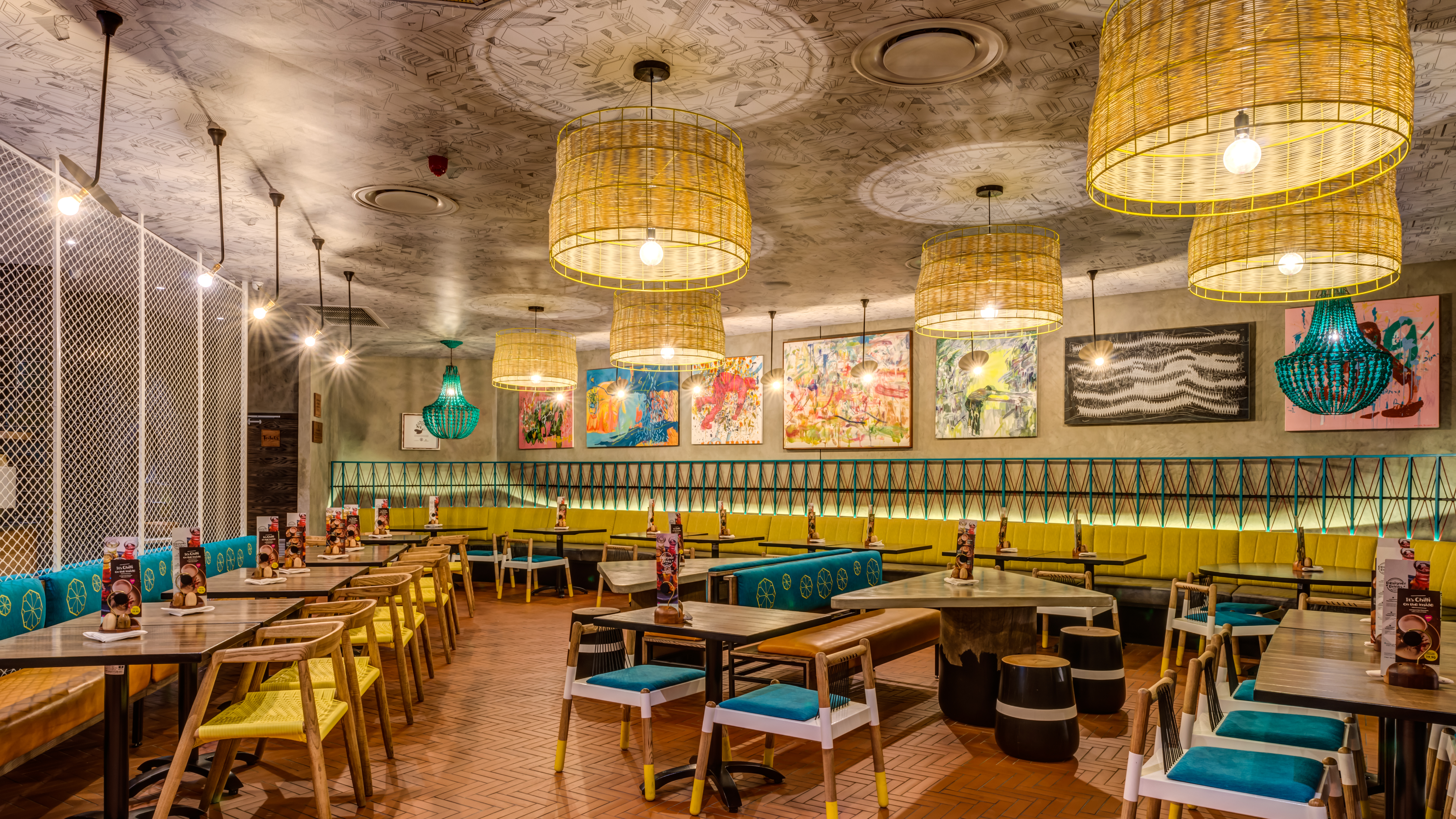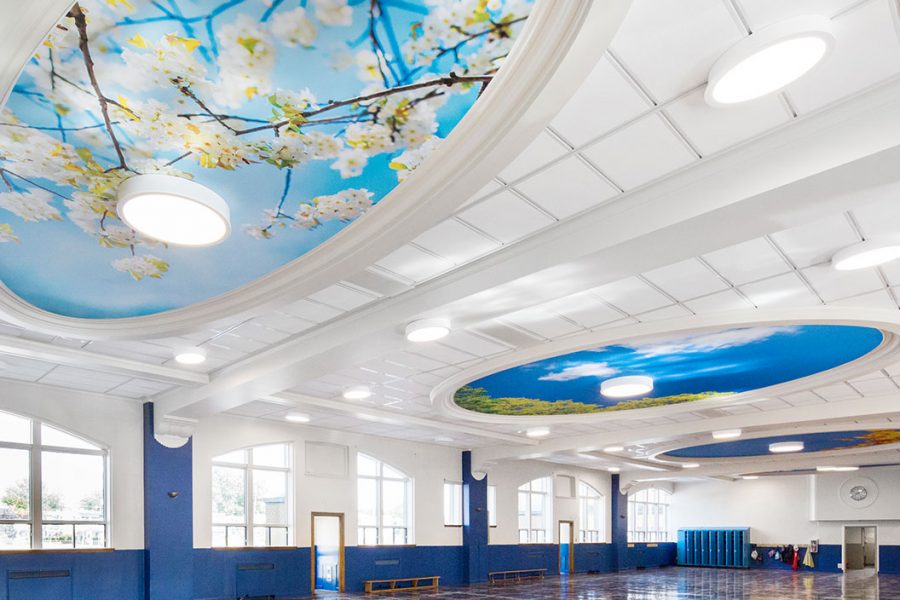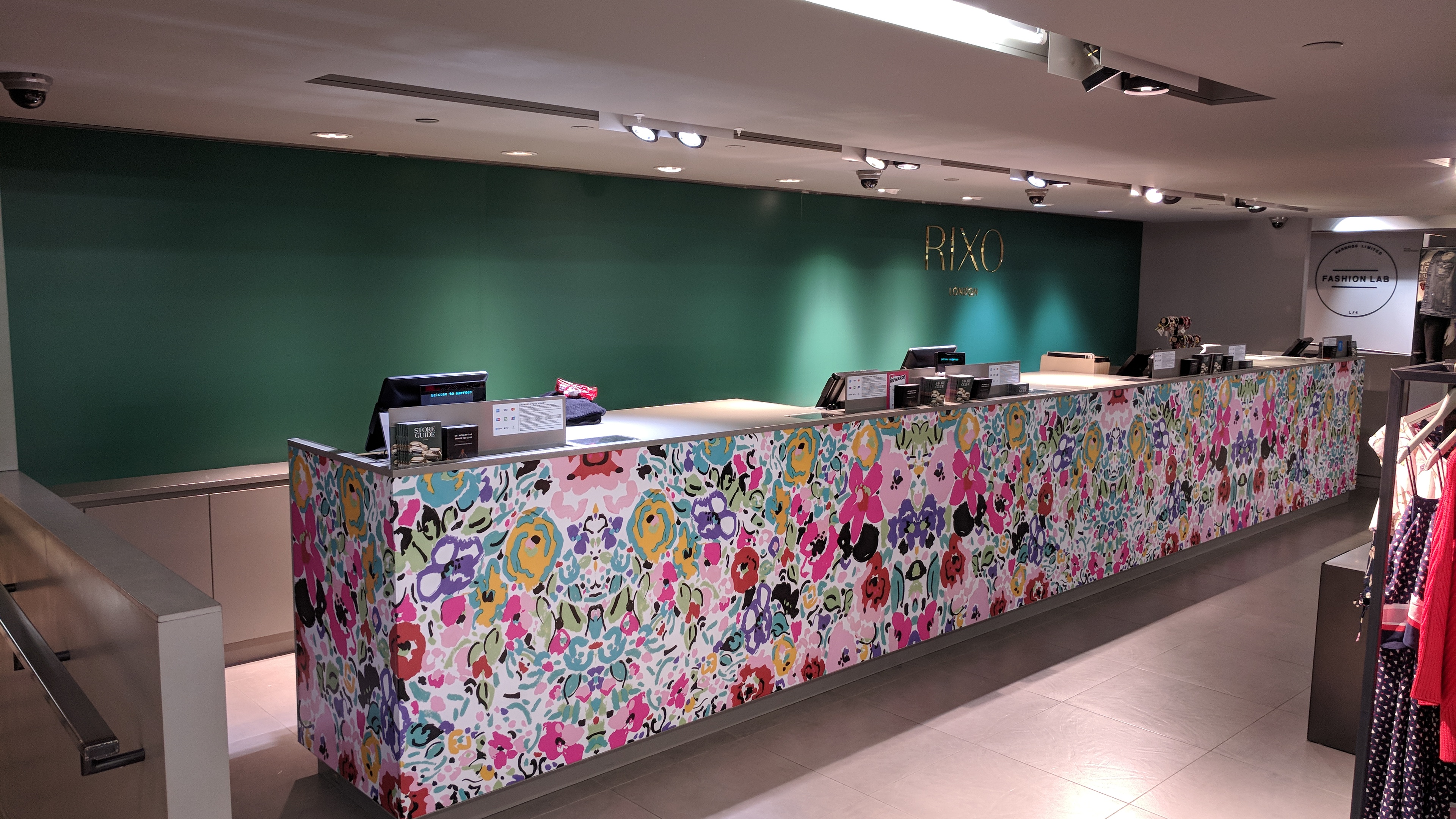Looking for some advice?
Despite the ongoing challenges presented by Covid19, we’re here to help. If you’re working on a large format project, and have any questions, please get in touch via our contact form – our expert project managers are on hand to answer any of your questions.
In 2016, The World Economic Forum published a report titled “The Future of Jobs”, in which 44 percent of global businesses and HR executives identified changing work environments as one of the top demographic and socio-economic drivers of change across all industries.
As new research emerges on the impact our workplaces have on our productivity and wellbeing, and new approaches to the world of work in general start to destabilise the traditional model of employment, businesses need to consider how their employees and consumers truly relate to their brand experience.
This experience has traditionally relied on a few central tenets: logos, visual motifs, colours, and a consistent tone of voice. But while important, these things are inherently passive. As our expectations of our workplaces continue to increase, and new technologies expand the potential for innovation, businesses are transitioning to the active and immersive, finding ways to make their brands a part of a physical, three-dimensional space.
What is environmental branding?
Combining a number of disciplines – including graphic design, interior design, and architecture – environmental branding takes the visual and emotive aspects of a brand, and translates these into a physical space.
Depending on the specific business and space in question, environmental branding can involve a number of different elements. 3D features such as furnishings, graphic touches such as artwork or printed wall vinyl, and even more immersive solutions such as smart device integration can all play a part.
There are many moving parts in a successful environmental branding project, but a few stand out as particularly important:
Interdisciplinary Collaboration
Successful environmental branding requires the expertise of a number of different professionals to come together and collaborate, using their own insight to inform the broader design of a project.
This interdisciplinary approach is important for a number of reasons. An architect might be able to design the physical layout of a space, with an awareness of things such as lighting and structural aesthetic, but they’re less likely to handle the interior design elements with the same acumen as a specialist. In the same sense, an interior designer might not be aware of the extent of the printed options available to them without working alongside a print firm.
Different approaches for different industries
It’s easy to assume that environmental branding is only applicable to the corporate, white-collar world of office work, but this isn’t the case at all. While offices can offer a particularly bountiful ‘blank canvas’, environmental branding can work in almost any environment.
Restaurants, hotels, and other hospitality businesses can all adopt the visual motifs of their branding (such as artwork, colour schemes, and patterns) into the physical environment of their spaces. This presents customers with an immersive and authentic experience that draws not just upon the services or products of a company, but its identity, too. The same can apply in the world of retail, with shops and storefronts unifying their aesthetics and design under a common brand banner.
Forward thinking designs
One of the risks with any new design trend is the potential for it to become nothing more than another industry buzzword. The notion of ‘branded spaces’ can already conjure images of clichés (we’re talking beanbags and fake turf), so it’s vital that when creating a positive branded environment, a company thinks progressively and innovatively.
It isn’t just about slapping a few stickers on a wall, giving everyone a branded coaster and hanging up some motivational pictures of waterfalls and really long roads; it’s about understanding what it is your brand stands for, and translating this into the real world.
For example, if your brand works in an environmentally conscious way, whether that involves actively contributing a ‘green’ product to the market or simply being eco-conscious in the work you do, then making the most of a reusable/recyclable solution such as a tension fabric system – instead of plastic vinyl – can be far more effective.
Similarly, an appreciation of the more subtle ways to convey your brand values is important. This ‘show don’t tell’ approach is often the most effective – a creative agency offering a chalkboard wall surface for staff to draw on says a lot more about your ethos than sticking up a poster of an Andy Warhol quote.
Why should a company adopt environmental branding?
There are few things less inspiring than a drab, grey, cubicle-ridden office. They might function perfectly effectively as a base of operations, but as the world of work shifts and changes (with the very concept of what an office is and should be being called into question), employees and consumers want and expect more.
It helps cultivate team spirit
Your employees are the oil that keep the wheels turning, the vanguard of your business. They are (or at least should be) the most important element of your company, and their wellbeing and success should remain one of your top priorities.The most productive and successful teams don’t just work alongside one another, they work with each other, and cultivating a true team spirit within your staff is vital.
There are all kinds of ways to approach this, from perks to financial incentives and extra time off; but providing your team with a positive environment in which to work can establish a baseline from which all other incentives can stem. By unifying the space in which your team works under a common banner, your office or workspace can become the living, physical embodiment of the things you stand for as a company.
It helps your staff work at their best
On top of the slightly fluffier sense of ‘belonging’, an increasing amount of research now shows that a well-designed workspace can actually improve staff performance and wellbeing.
A global report from Steelcase found that, shockingly, nearly a third of the workforce in 17 different prominent economies is actively disengaged – but that for those remaining two thirds, workplace satisfaction directly correlates to positive engagement.
Several factors, such as autonomy over how and where to work, access to a dynamic range of spaces and environments, and – importantly – a unified company culture all have a direct impact on performance. Best of all, all of these things be brought under the umbrella of a branded environment.
It speaks volumes to clients and customers
One of the most significant benefits of a branded environment is the first impression it leaves clients and customers. No matter the industry in which you operate, clients and customers expect the very best. With digital interconnectivity and things like social media making it easier than ever to discover businesses that truly go above and beyond, it’s no longer enough to simply have a pleasant space if you want to truly excel.
It is possible to swing the pendulum too far in the other direction. You don’t want to overwhelm or irritate visitors to your space (no one actually wants to be asked to have a meeting in a ball pit, as novel and fun as it might seem), but with a discerning approach you can work to create an environment that demonstrates your dedication to the work you do, the things you stand for, and the people who work for and with you.
It helps attract (and retain!) the best talent
Clients and customers aren’t the only demanding markets you’ll need to appeal to. If you want to attract and retain the best talent to work for for your business, a branded environment can make a big difference.
The world of work has changed a lot. The younger generation of employees no longer expects to stay with one company for their entire career, and employers have to work hard to ensure the grass never looks greener elsewhere. The workspace you offer your team contributes significantly to this, and it’s important to think not about how to make your office ‘fun’ or ‘quirky’, but how to ensure that it cultivates a sense of belonging.
Environmental branding is an extremely effective way of making your staff feel like they belong to a family, and unifying the work they do under a shared sense of purpose. Whether overhauling your branding more broadly, renovating an existing workspace, or moving to somewhere new, environmental branding should be on the list of things to consider – and could leave your business feeling ‘brand’ new.






